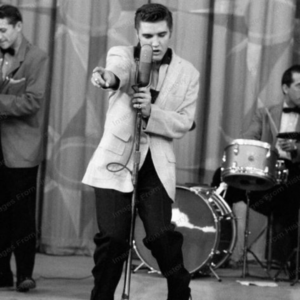
Introduction to “Blue Christmas” by Elvis Presley
Elvis Presley’s rendition of “Blue Christmas” is a timeless classic that has resonated with audiences for decades. Released in 1954, this heart-wrenching ballad has become a staple of the holiday season, capturing the melancholic undertones of loneliness and longing during the festive period.
Background
The song’s origins can be traced back to 1948 when it was first recorded by Bing Crosby. However, it was Presley’s iconic version that truly catapulted the song to stardom. His distinctive voice, coupled with the song’s evocative lyrics, created a powerful and emotional performance that has endured the test of time.
“Blue Christmas” is a poignant exploration of the emotional turmoil that can accompany the holiday season. The lyrics paint a vivid picture of a solitary figure grappling with feelings of isolation and sadness amidst the joyful celebrations. The song’s melancholic tone is further enhanced by Presley’s heartfelt delivery, which conveys a sense of genuine vulnerability and longing.
One of the key elements that contribute to the song’s enduring appeal is its ability to evoke a wide range of emotions. Whether it’s the bittersweet nostalgia of past Christmases or the poignant sadness of a broken heart, “Blue Christmas” resonates with listeners on a deeply personal level. The song’s universal themes of loss, loneliness, and longing have made it a timeless classic that continues to touch the hearts of audiences of all ages.
Presley’s rendition of “Blue Christmas” is not only a musical masterpiece but also a testament to his enduring legacy. His ability to connect with listeners on an emotional level has solidified his status as one of the greatest performers of all time. The song’s enduring popularity is a testament to the power of music to transcend time and touch the human soul.